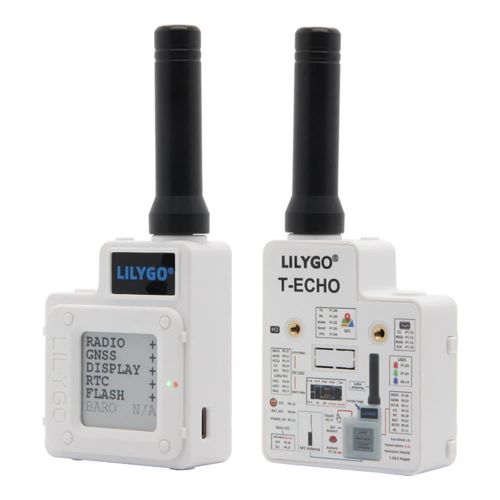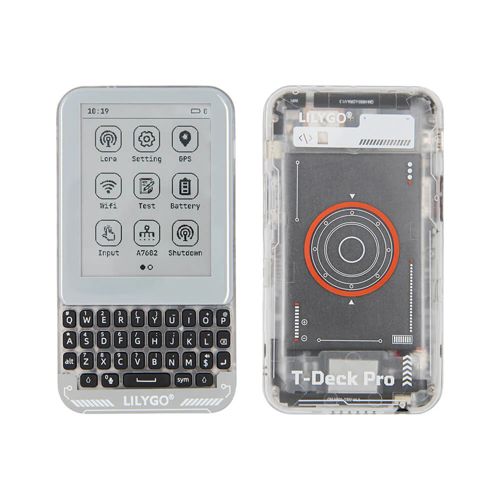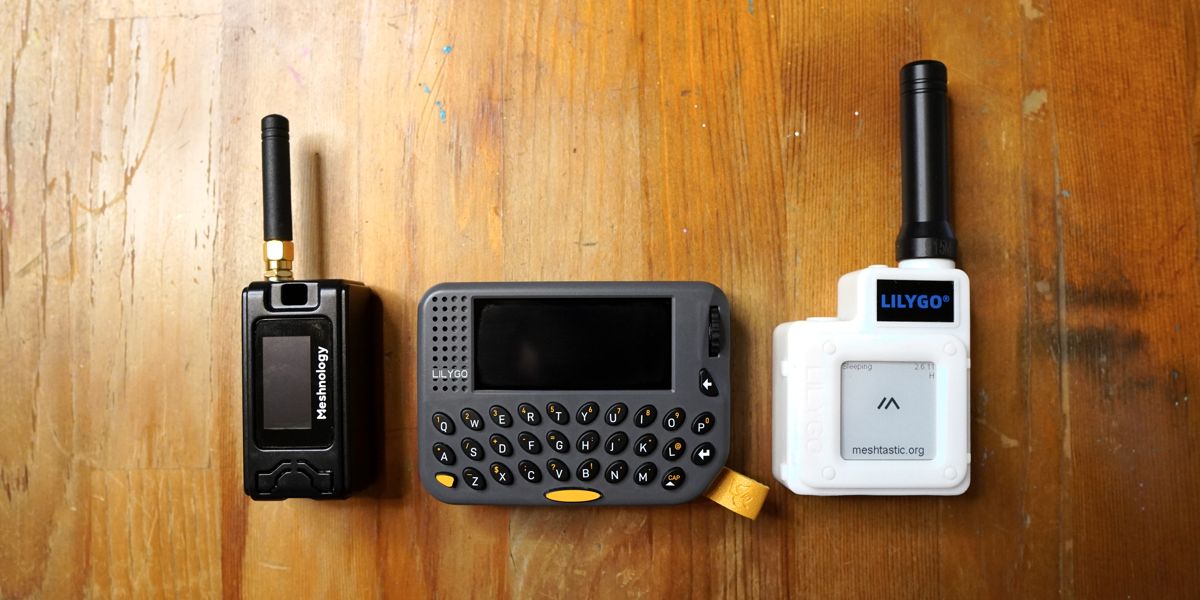Mesh networking is a fun hobby and can be very useful in emergency and off-grid situations.
I experiment with different devices and networks all the time.
Here's what I currently recommend using…
External Radios (Use with a Mobile Phone)
This is the easiest and cheapest way to get started with mesh networking. I recommend buying an all-in-one or pre-assembled kit instead of buying each component individually. It's easier and the price ends up being similar.
These radios connect to a smartphone via Bluetooth and you use the smartphone app to send and receive messages through these radios.

Lilygo T-Echo
This is one of the best radios on the market right now. It's easy to set up and works well.
I've been using 2 of these for awhile and the firmware on Meshtastic is finally at a point where it's predictable.
The e-Paper screen saves power and the built-in antenna is securely attached to the body, making it ideal for travel. There is even a backlight, if you want to use it at night.

Heltec Lora32 v3
If you prefer an inexpensive kit with 2 radios, then this is for you. The 2 radios allow you to start using your favorite mesh network right away with one of your family or friends.
It comes with everything you need, the radio board, case, antenna and battery. There is no soldering involved, just snap the pieces together and start it up.
I highly recommend this kit because it's inexpensive and is widely supported.
Standalone Devices
These devices allow you to communicate on mesh networks without a mobile phone. They are all-in-one devices that include the LorRa radio, keyboard and screen.

Lilygo T-Deck Pro
The LilyGO T-Deck Pro is a handheld ESP32-S3 development device that combines powerful processing with long-range LoRa communication, making it ideal for off-grid networking projects like Meshtastic.
It features an e-Paper display, which saves power and and is easier to read in the sun. The compact design is also easy to carry.
I'm not a fan of this device because I find the flashing e-Paper screen annoying. But some people love the slim design, so it might be for you.

Lilygo T-Deck Plus
The LilyGO T-Deck Plus is an upgraded ESP32-S3 handheld device designed for LoRa-based communication and off-grid networking projects.
It includes a built-in keyboard, a high-resolution 2.8-inch display, and support for long-range wireless connectivity, making it a versatile tool for applications like Meshtastic.
I like this device because it has everything you need in a complete package. You can even add an external antenna for extra range.

Lilygo T-Lora Pager
The LilyGO T-LORA Pager is a compact ESP32-S3 device with LoRa connectivity, designed to function as a lightweight, off-grid communication tool.
This pager design is fantastic. I feel that it will be one of the go-to devices in the future. Since the antennas fold up, it gives you added range when you need it, but can fold up into a very small package when you don't.
The Pager also has speakers, a headphone jack, SD card slot and more, which means that it can support many features in the future.
It's not well supported yet, but the firmware for this device is being worked on and should be available soon.
Networks
Here is a list of networks that are currently available. The smartphone mobile app for each network is available via the links below.
Do your own research and experimenting, as they have different features and are at different stages of development. Not all devices will work with all networks.
- Meshtastic – Currently the most popular network and supports the most number of devices.
- Meshcore – Works on a slightly different architecture compared to Meshtastic. It should be more usable at scale, but it's currently mostly popular in the United Kingdom.
- Reticulum – This is more than just a mesh network. It's an entire networking system that can switch between wired and wireless devices. Mesh communications over LorRa is just one of its features.
- Chatterbox – Designed for off grid communication and emergency situations.
